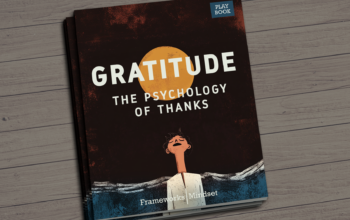Defining the Problem—the Essential First Step
Right Shot, Wrong Target
Matt Emmons had a commanding lead going into his last shot in the 50-meter Olympic rifle final. The 23-year-old star had already won gold in another event and was one shot away from the historic double-gold. All he had to do was hit anywhere on the target and he would take home the prize. He breathed, carefully aimed, and confidently pulled the trigger just like he had so many times before.
Bullseye.
But he didn’t see his score. Emmons looked to the judges—had there been a malfunction? They shook their heads ‘No’. And then he realized what had happened. He had hit the bullseye all right, only it was in the next lane over. He had hit a near-perfect shot on the wrong target.
The errant shot dropped Emmons from first to eighth place and out of the running for a medal. To say that everyone in the arena was shocked would be an understatement.
“On that shot,” Emmons said afterward, “I was just worrying about calming myself down and just breaking a good shot, and so I didn’t even look at the number. I probably should have. I will from now on.”
The Essential First Step to Problem Solving
In retrospect, the champion rifleman laughs about the miscue. He says he’s actually thankful for it since it led him to the beer garden afterward where he met his future wife. But Emmons’ story is a cautionary tale that we can all benefit from. All too often when we’re faced with a problem do we jump to the solution without doing the due diligence. It doesn’t always end in disaster. But, when we don’t properly assess the situation and understand what we’re trying to achieve, things can and often do go awry—the solution ends up being inefficient or ineffective, or, as in the case of Emmons, it ends up being a perfect solution for the wrong target.
We see it more often than not. Who doesn’t recall a time when everyone sits down for a meeting to discuss a new initiative and, instead of reviewing the situation and discussing the needs, someone starts off with a recommended solution? The solution might be the right way to go in the end, but until everyone understands the problem they are trying to solve, they won’t know for sure that what is being proposed will do the trick.
Jumping to Solutions
For the most part, this jumping to solutions is ingrained in the way we do things. I was consulting on a nonprofit board one time and the director decided that we needed to update the mission statement. So, the board carved out an hour to brainstorm ideas for the new verbiage.
Now, if you’ve ever been a part of a committee charged with writing something, you know what followed—an endless, aimless process of digging up words and phrases and pinning them together in hopes we would arrive at a cohesive and compelling statement. By the end of the hour, we had tested out so many word combinations we could have been certified in Wordle. But, ultimately, we were nowhere near a workable mission.
If only we had started out with a firm understanding of what we were doing—what a mission statement is, what it does, and how it accomplishes it. Then we could have used that hour to hone in on a viable statement. When disagreements came up we could have referenced the goal and settled the matter objectively. Instead, we just played word volleyball, hitting the phrases over the net to see if anything would land.
Without fully understanding the situation before you, it is impossible to think clearly, problem-solve, and get things done. As such, the first component of the Frameworks Mindset is to define the problem, a process that is not as easy as it might seem.




